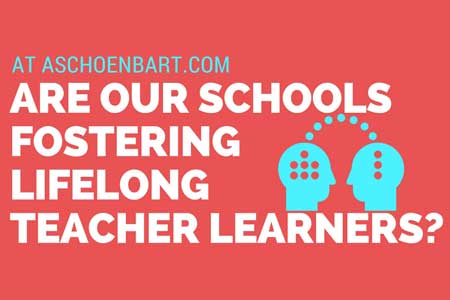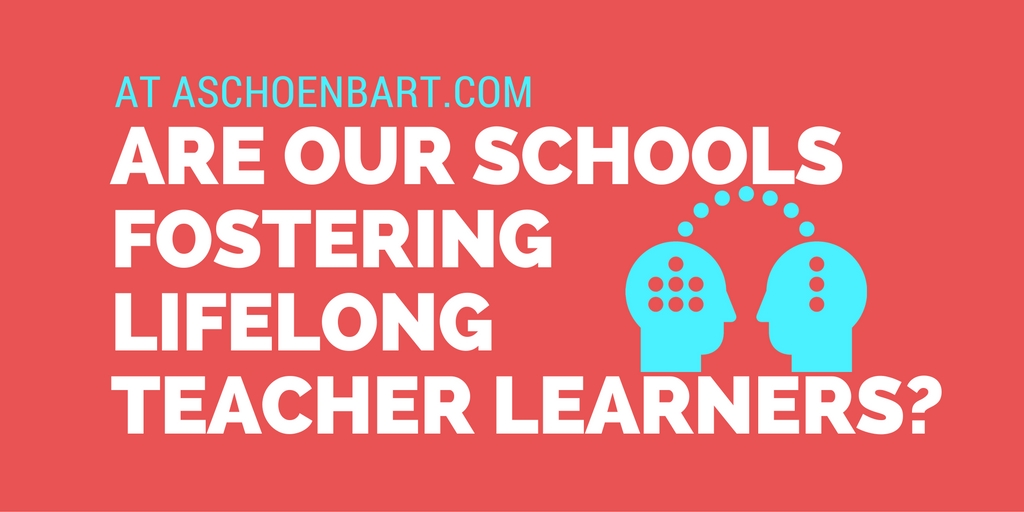Are Our Schools Fostering Lifelong Teacher Learners?


So much of what our schools do for students should also be done for our teachers. We need to help students love learning, develop 21st century skills, nurture their passions and interests, and to become lifelong learners. And we need to do all of that for educators, too.
It seems so obvious, and yet our educational systems so often recognize what’s best for student learners--choice, passions, curiosity--and then ignore the same for the adult learners. Not every quality of a child’s education should be mirrored for adults, but I’m recognizing more and more connections in what I want learning to be like, for both me and for my students.
These reflections were inspired by Michael Fullan’s The New Meaning of Educational Change, which I recently finished reading for class. The question I kept asking myself throughout was whether or not learning is really a priority for teachers? Not just the small percentage of connected educators and conference goers, but the majority of educators?
And more importantly, perhaps, are our schools a place that foster lifelong learning for teachers? Do our schools value it? Is there an importance placed on learning outside of teaching? Is learning a passion?
Fullan argues, “We need leaders--teachers, school, and district, who model and foster professional capital by being lead learners” (2016, p. 229-230). The only way that we can really develop capacity for continuous improvement and innovation is through learning and leadership.
Yet “restructuring (which can be done by fiat) occurs time and time again, whereas reculturing (how teachers come to question and change their beliefs and habits) is what is needed” (2016, p. 23). This quotes really struck a chord with me as I look forward to the new school year, to learning, and to change. How much of the change that happens in schools is driven by “the right drivers,” like improving culture and learning?
Instead, change is often driven by management and outside influences. Sure, they often lead back towards students and learning, but might have more impact if they developed true intrinsic motivation for learning, growth, and change--what Fullan calls the right drivers.
Tools and ideas to transform education. Sign up below.
One way to improve school systems and culture is to build “the instructional skills of teachers, and the managerial skills of principals” (2015, p. 229), but where we learn in communities, not just as individuals. I want to work in, teach in, and learn in schools where learning is the culture and language of what goes on every day. A school that creates “conditions where leaders and participants continually develop a ‘shared depth of understanding about the nature of the work’” (2016, p. 229).
As the summer months wind down, I welcome a new opportunity to do something great for our schools, teachers, and students. And with every opportunity, comes the need to reflect and rethink our drivers and motivations.
This year, I want to make sure that it all comes back to doing what’s best for students. And to be the best teacher I can be, learning and a passion for learning needs to be valued--as a professional educator, as a classroom community, and as a part of school culture.
cross posted at www.aschoenbart.com
Adam Schoenbart is a high school English teacher, Google Education Trainer, and EdD candidate in Educational Leadership. He teaches grades 10-12 in a 1:1 Chromebook classroom at Ossining High School in Westchester County, NY and received the 2014 LHRIC Teacher Pioneer Award for innovative uses of technology that change teaching and learning. Read more at The SchoenBlog and connect on Twitter @MrSchoenbart.
